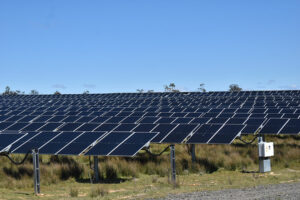THE PHILIPPINE ECONOMY is on track to grow by 5.7% this year on the back of strong household spending, steady remittances and sustained public investments, Moody’s Ratings said.
“We expect the Philippines to maintain strong economic growth relative to regional and rating peers,” Moody’s said after the completion of a periodic review of Philippines’ credit rating.
“Growth will be supported by resilient household consumption, stable remittance inflows from overseas workers, and public investment spending, and ongoing structural reforms,” it said in a report.
Moody’s forecast is within the government’s revised 5.5-6.5% gross domestic product (GDP) growth target for this year.
In the second quarter, GDP expanded by an annual 5.5%, up from 5.4% in the first quarter but slower than the 6.5% in the same period last year.
For the first half, GDP growth averaged 5.4%, slower than the 6.2% a year ago.
Moody’s flagged downside risks to the outlook arising from the US tariff policies.
“Although the Philippines’ exposure to trade and global value chains is relatively low, uncertainty around US trade policy and tariffs presents some downside risks to domestic consumption and investment,” it said.
Since Aug. 7, the United States has been imposing a 19% tariff on Philippine goods entering the US. The US is one of the top destinations for Philippine-made goods.
Growth will also be supported by its fiscal consolidation efforts, but Moody’s flagged the government’s high debt stock and interest burden.
“Fiscal consolidation efforts are on track to meet the government’s revised Medium-Term Fiscal Framework of reducing the deficit to 4.3% of GDP by 2028, supported by the implementation of reform measures at enhancing revenue collection and spending efficiency,” Moody’s said.
While this will help temper Philippines’ debt burden, Moody’s said debt will remain “above pre-pandemic levels.”
As of June, the Philippines’ sovereign debt hit a fresh high of P17.27 trillion, up 11.5% from P15.48 trillion in the same month in 2024.
This brought the debt-to-GDP ratio to 63.1% at the end of June, the highest ratio since 2005. This is above the 60% debt-to-GDP threshold considered by multilateral lenders to be manageable for developing economies.
“Debt affordability, measured by the ratio of interest payments to revenue, is expected to weaken over the next two years, before gradually normalizing as global refinancing rates decline and economic growth returns to its long-term trend,” the debt watcher said.
“Despite rate cuts by the central bank since the second half of 2024, elevated government funding costs and a lag in the monetary policy transmission will keep interest burden higher,” it added.
The central bank has so far lowered borrowing costs by a total of 150 bps since it began its easing cycle in August last year.
Moody’s said the Philippines’ “strong access” to domestic and international funding sources and ample foreign-currency reserves can help it manage volatility in global capital flows.
Moody’s periodic review came after it affirmed the Philippines’ “Baa2” rating and “stable” outlook in August 2024.
It said that its outlook mirrors a balance of risks at the “Baa2” rating level.
“Structural reforms implemented over the past several years, along with a pipeline of public and private sector investment projects raise the prospect that growth accelerates more than we currently project, improving fiscal performance,” Moody’s said.
“This is balanced against downside risks to the sovereign’s economic and fiscal strength stemming from slower-than-anticipated fiscal consolidation that could lead to fiscal slippages, regional geopolitical tensions, and climate-related shocks,” it added.
Moody’s also assigned the Philippines an “a3” rating for its economic strength. It said this reflects a balance between the economy’s strong growth potential and its low GDP per capita compared to other investment-grade countries, as well as its vulnerability to climate-related risks.
Meanwhile, the “baa1” rating for the Philippines’ institutions and governance shows a balance between existing governance challenges and the efficiency of its macroeconomic and fiscal policy.
On the other hand, its “ba1” fiscal strength rating indicates a moderately high government debt level, rising debt costs, and a relatively large amount of foreign currency-denominated debt.
The debt watcher said sustained strong economic growth, signaling recovery from pandemic shocks, could improve the country’s credit rating.
“Upward pressure on the rating would likely be driven by a more rapid improvement in fiscal and government debt metrics than we currently expect, indicating sustained trend recovery from the deterioration caused by the pandemic shock,” Moody’s said.
In a separate statement, the central bank welcomed Moody’s “favorable assessment.”
“The Philippines has built ample reserves and policy space to absorb external shocks, allowing us to maintain stability even in times of global uncertainty,” BSP Governor Eli M. Remolona, Jr. said. — Katherine K. Chan

















